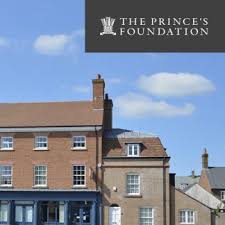The Fundamentals of Sustainable Urban Design
Urban areas are rapidly growing, and the need for sustainable urban design has never been more critical. Sustainable urban design focuses on creating cities that are environmentally friendly, socially inclusive, and economically viable. By integrating principles of sustainability into urban planning and development, we can build cities that are resilient, efficient, and enjoyable for all residents.
Key Principles of Sustainable Urban Design
**Compact Development**: Encouraging compact, mixed-use development reduces urban sprawl, minimises the need for long commutes, and promotes walkability.
**Green Spaces**: Incorporating green spaces such as parks, gardens, and rooftop vegetation helps improve air quality, reduce urban heat islands, and enhance biodiversity.
**Public Transport**: Investing in efficient public transportation systems reduces reliance on private cars, decreases traffic congestion, and lowers carbon emissions.
**Energy Efficiency**: Designing buildings with energy-efficient features like proper insulation, natural lighting, and renewable energy sources reduces energy consumption and greenhouse gas emissions.
The Benefits of Sustainable Urban Design
Sustainable urban design offers a range of benefits to both residents and the environment:
- Improved quality of life for residents through access to green spaces, walkable neighbourhoods, and clean air.
- Enhanced resilience to climate change impacts such as extreme weather events and rising temperatures.
- Economic savings from reduced energy costs, lower healthcare expenses due to improved air quality, and increased property values in sustainable neighbourhoods.
- Promotion of social equity by providing affordable housing options, accessible public transportation for all residents, and inclusive community spaces.
Conclusion
Sustainable urban design is essential for creating cities that are liveable now and in the future. By prioritising environmental stewardship, social equity, and economic prosperity in urban planning processes, we can build resilient cities that benefit both current and future generations. Embracing the fundamentals of sustainable urban design is key to shaping a more sustainable future for our rapidly urbanising world.
Exploring the Core Principles and Elements of Sustainable Urban Design
- What are the 4 principles of urban sustainability?
- What is sustainability in urban design?
- What is the main element in sustainable urban design?
- What are the principles of sustainable urban form?
What are the 4 principles of urban sustainability?
Urban sustainability is guided by four key principles that form the foundation of sustainable urban design. These principles include compact development, green spaces, public transport, and energy efficiency. Compact development encourages mixed-use areas to reduce urban sprawl and promote walkability. Green spaces such as parks and rooftop gardens improve air quality and biodiversity while mitigating the urban heat island effect. Investing in efficient public transport systems reduces reliance on cars, easing traffic congestion and lowering carbon emissions. Energy-efficient buildings with features like insulation and renewable energy sources help reduce energy consumption and combat climate change. By adhering to these principles, cities can create more liveable environments that benefit both residents and the planet.
What is sustainability in urban design?
Sustainability in urban design refers to the practice of creating cities and urban spaces that meet the needs of the present without compromising the ability of future generations to meet their own needs. It involves integrating environmental, social, and economic considerations into the planning and development of urban areas to ensure long-term viability and resilience. Sustainable urban design aims to minimise resource consumption, reduce pollution, promote social equity, and enhance quality of life for residents. By prioritising sustainability in urban design, cities can address pressing issues such as climate change, resource depletion, and social inequality while creating vibrant, liveable environments for all.
What is the main element in sustainable urban design?
In sustainable urban design, the main element that underpins its effectiveness is the integration of environmental, social, and economic considerations into the planning and development of urban spaces. This holistic approach ensures that cities are designed to be environmentally friendly, socially inclusive, and economically viable. By prioritising elements such as compact development, green spaces, public transport, and energy efficiency, sustainable urban design aims to create cities that are resilient, efficient, and enjoyable for all residents while minimising negative impacts on the environment.
What are the principles of sustainable urban form?
The principles of sustainable urban form encompass key guidelines and strategies that shape the physical layout and structure of cities to promote environmental, social, and economic sustainability. These principles often include concepts such as compact development to reduce urban sprawl, the integration of green spaces to enhance biodiversity and mitigate climate change impacts, prioritising public transport to reduce car dependency and emissions, and designing energy-efficient buildings to minimise resource consumption. By adhering to these principles, cities can create a more liveable environment that balances the needs of residents with the preservation of natural resources for future generations.
